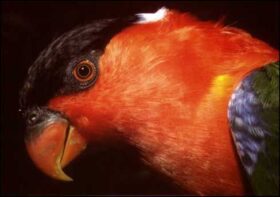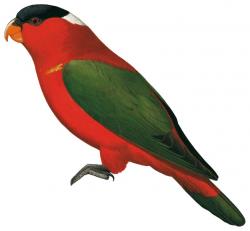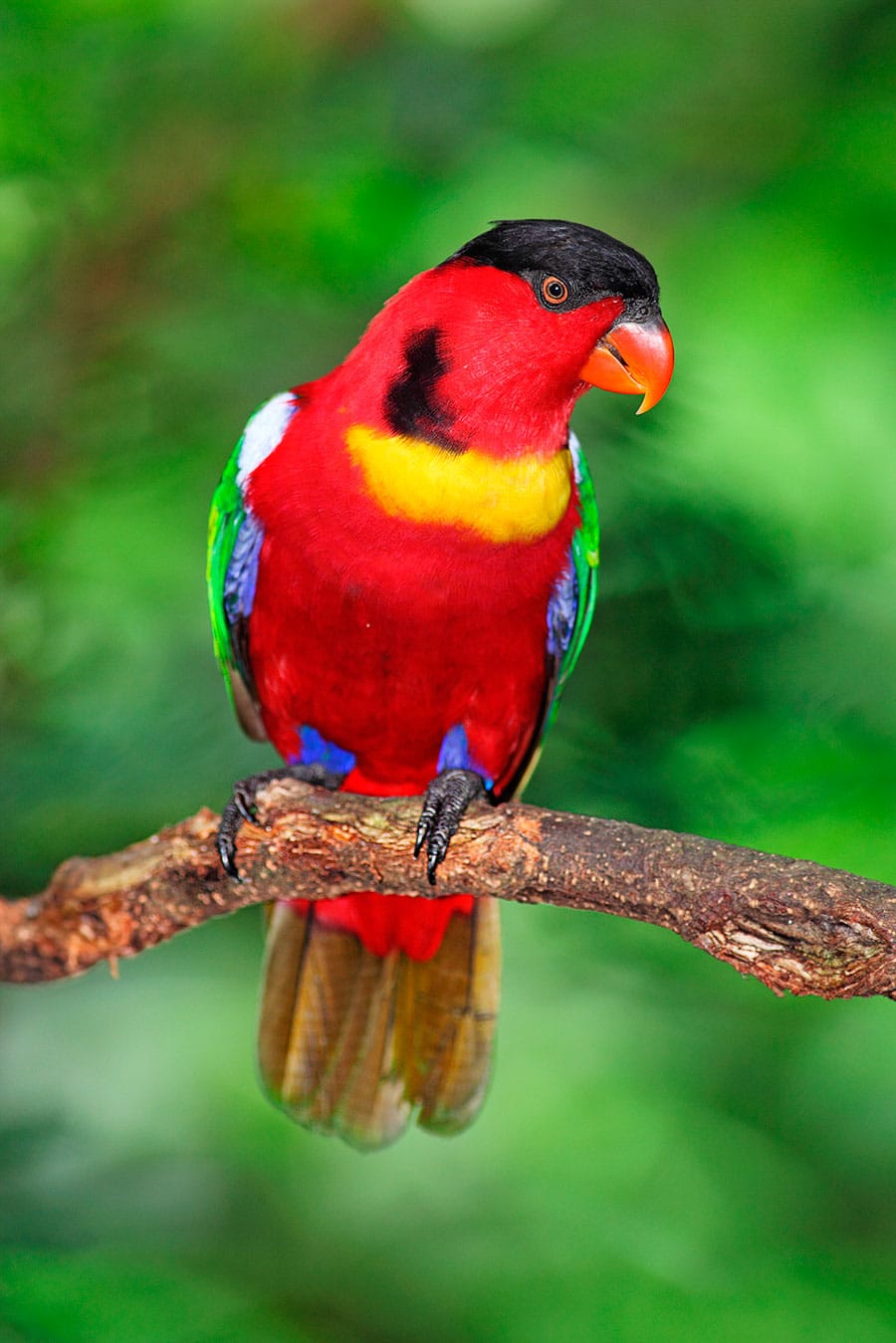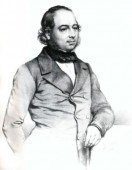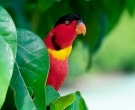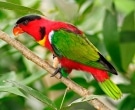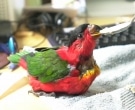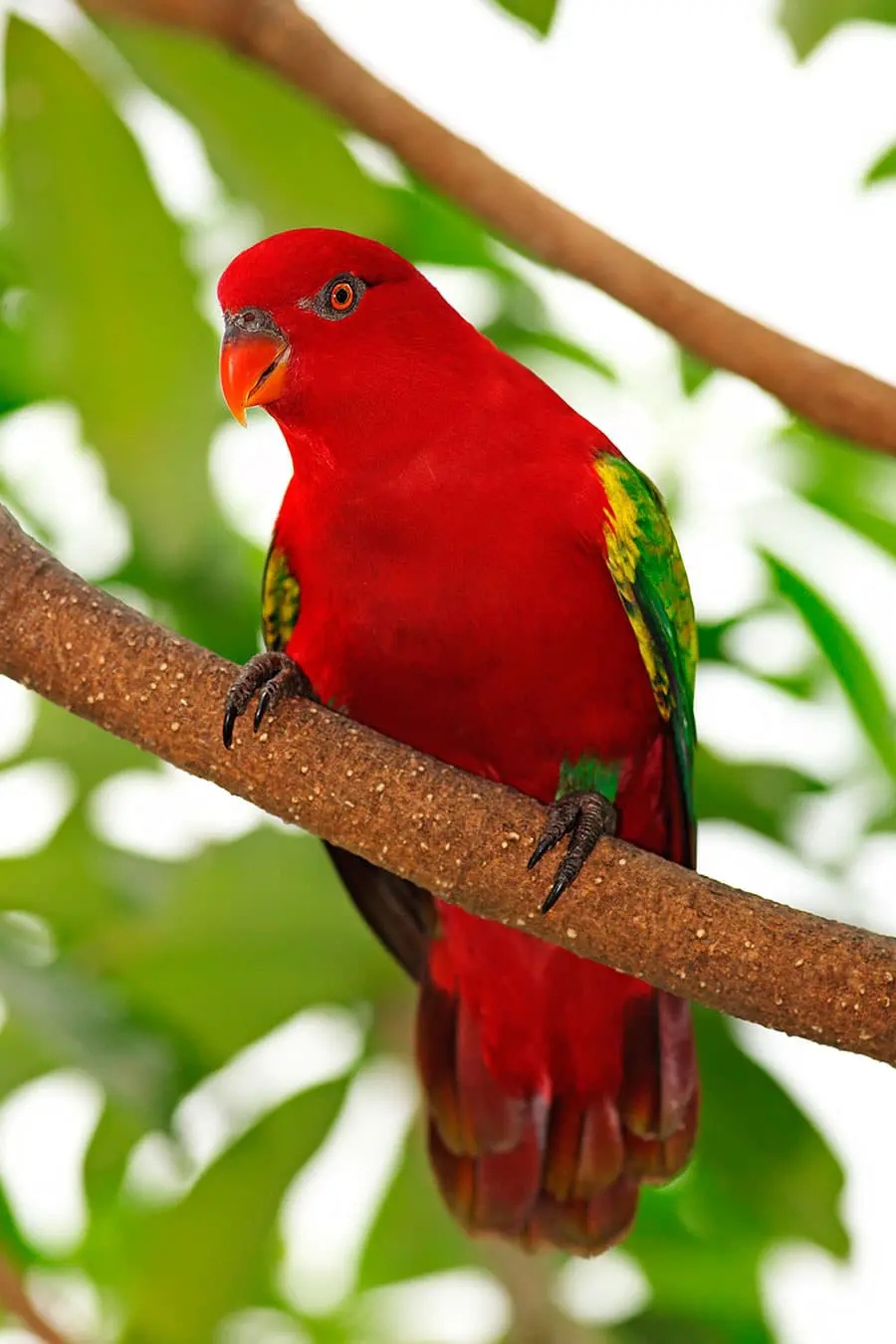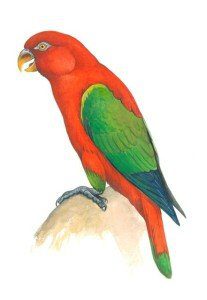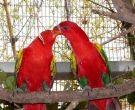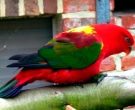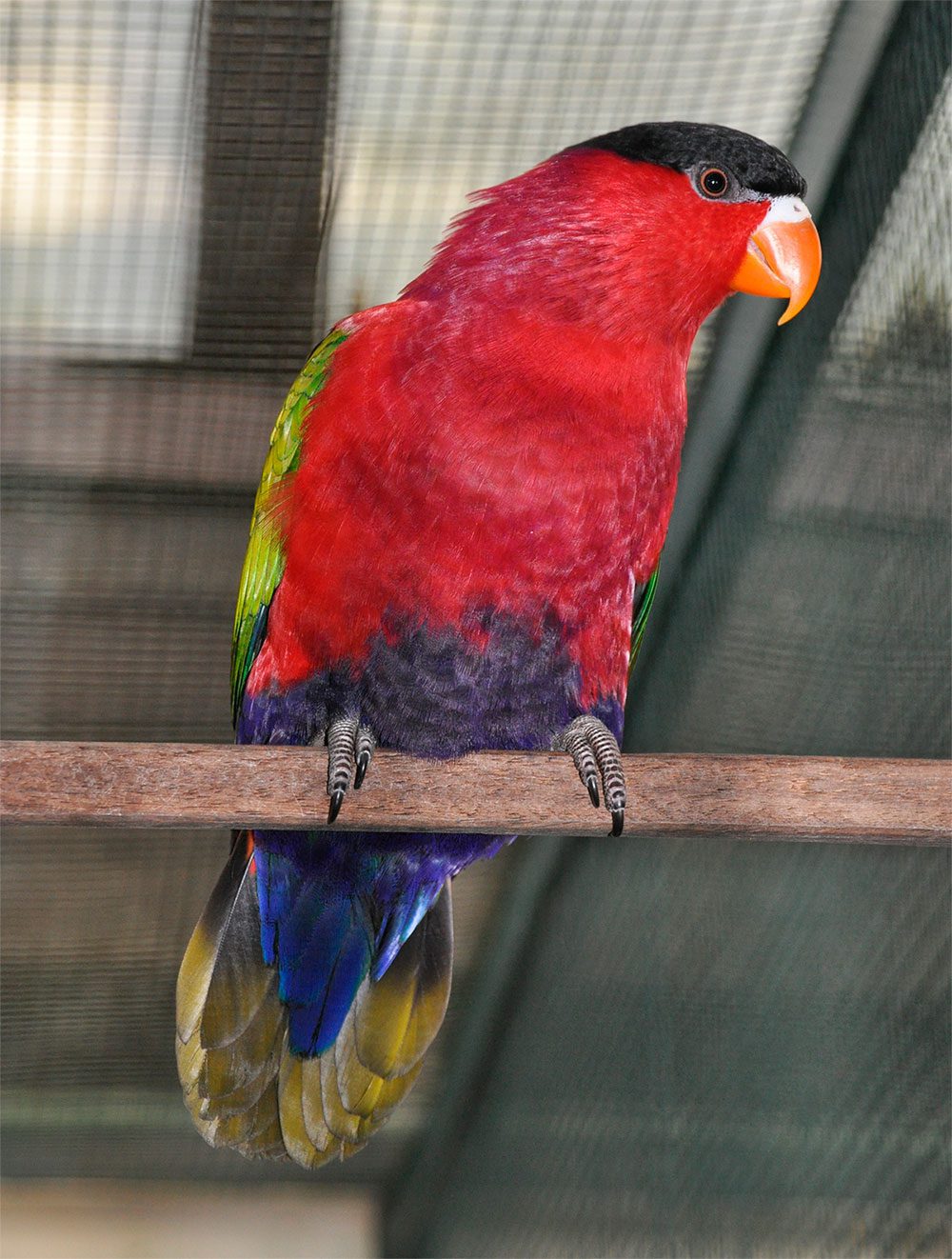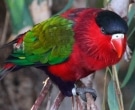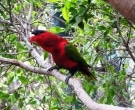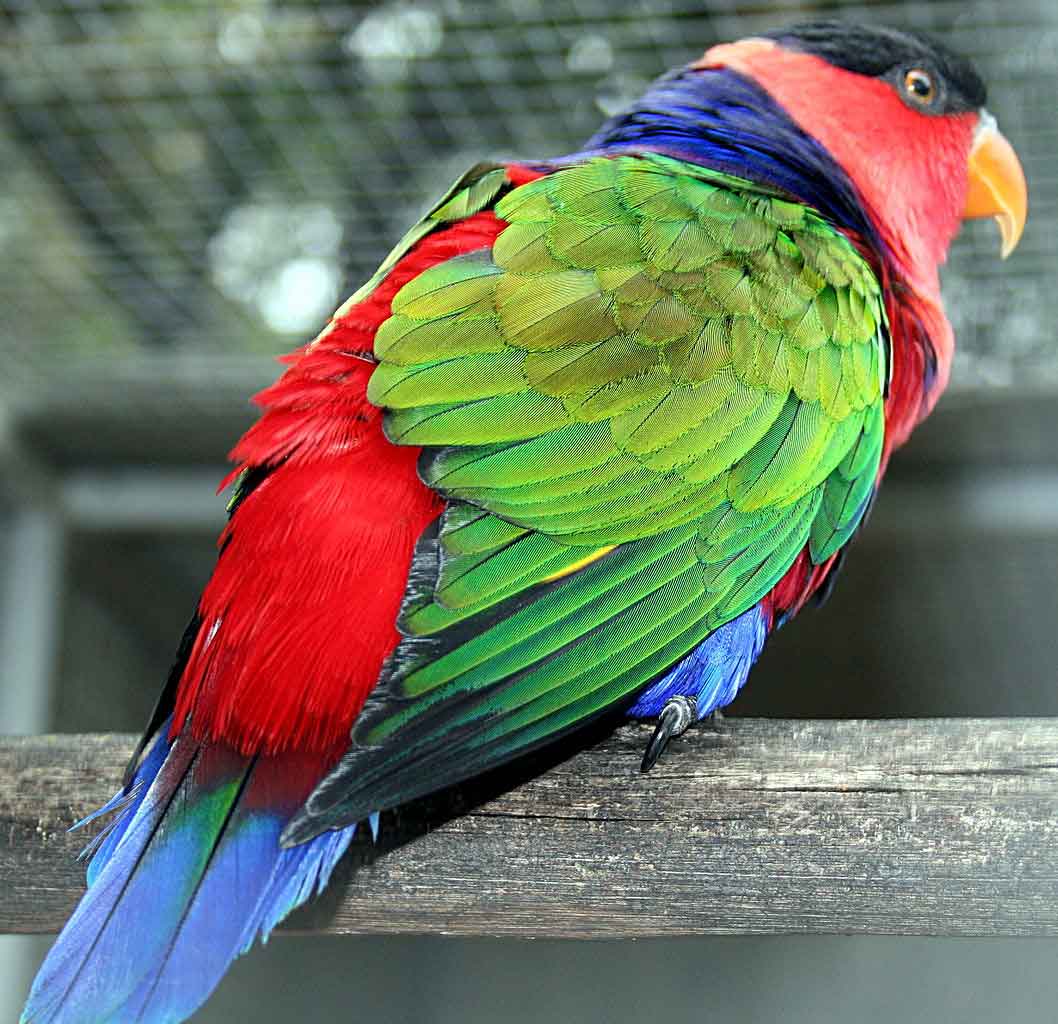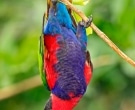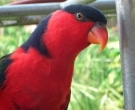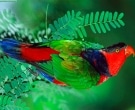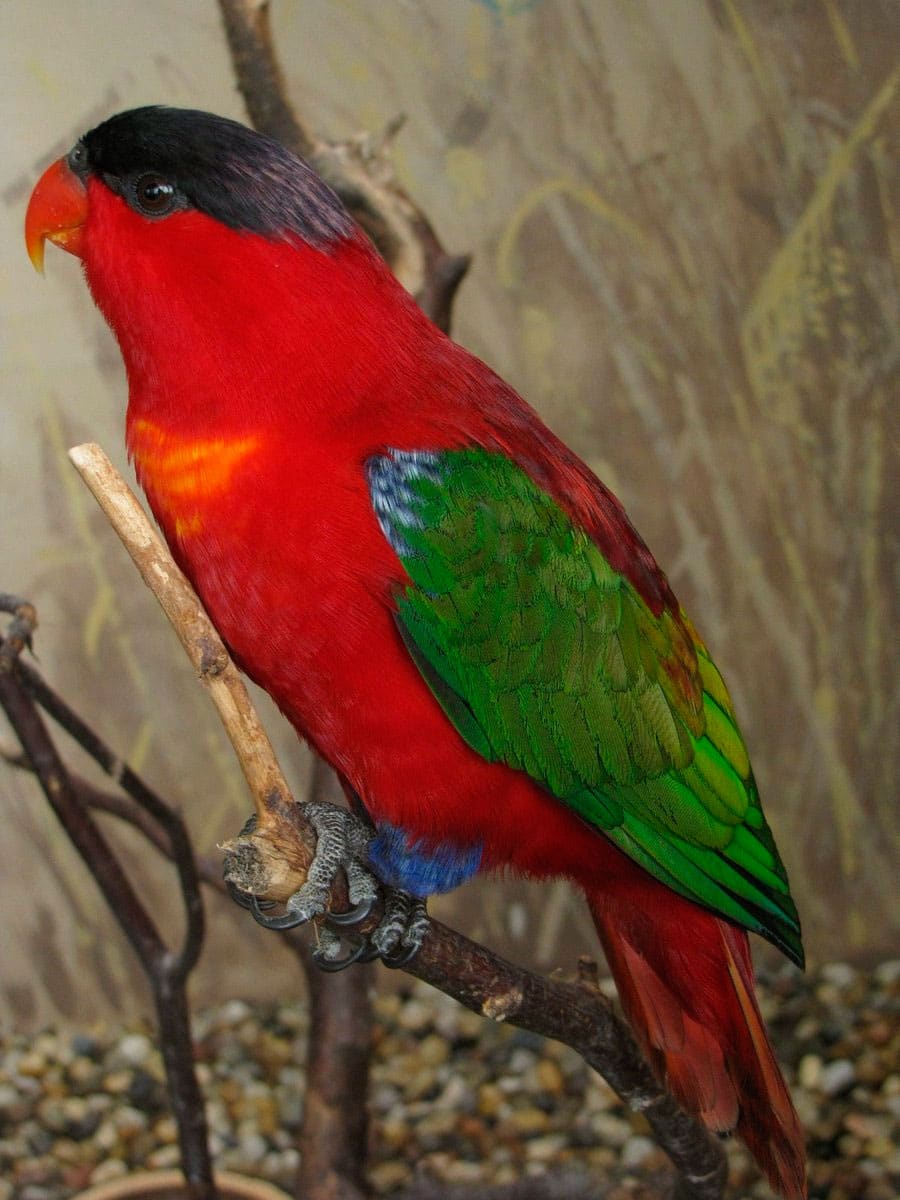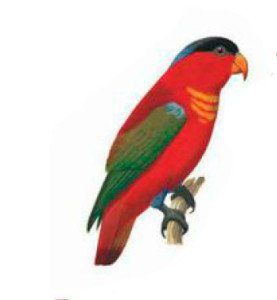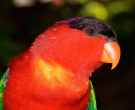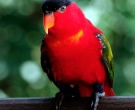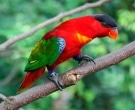Content |
|---|
Description
The White-naped Lory (Lorius albidinucha) has a length of 26 cm.. and a weight between 152 and 164 g..
Similar to the Purple-bellied Lory with which sympathy between 500 and 750 meters in the South of New Ireland.
The White-naped Lory It has a distinctive patch white in nape. The underparts They are entirely red except yellow markings on the sides of chest. It lacks dark violet broadcast belly and of the undertail-coverts, If shown by the Purple-bellied Lory. Seen at close quarters, the cere Dark also separates this species from the Purple-bellied Lory, what does he have cere white.
The White-naped Lory It is also less Beefy that the Purple-bellied Lory and has a whistle call which differs considerably with the distinctive snore nasal call of the Purple-bellied Lory.
Has the crown black, violet slightly marked by the white patch nape; rest of head bright red. The upperparts red. The wings They are green with a yellow band on the lower part and violet with white spots on the curvature. The upperparts They are red with yellow markings on the sides of the chest and blue marks on the the thighs. Tail red on the outside and yellow on the inside part. Bill orange with dark base in the upper jaw; cere black; irises yellow to reddish brown; legs greyish black.
Habitat:
Known only in the mountains south of New Ireland between 500 and 2.000 m, mainly on 1.000 m.
Usually found in pairs while feeding on fruits or wild flowers “Palm oil”. Been seen feeding on the same tree as the Purple-bellied Lory without harming it.
Reproduction:
No data reproduction in its natural habitat.
Food:
Feeds of fruit and flowers of the oil palm plantations.
Distribution:
Distinctive species, little known and restricted to the forests of the hills of New Ireland in the Bismarck Archipelago (Papua New Guinea).
Conservation:
• Current IUCN Red List category: Near-threatened.
• Population trend: Decreasing.
Quite common at all limits within its altitude range. The world population probably it is lower to the 10.000 specimens.
No information on population trends; But, the species is suspected falling slowly, as a result of logging.
The conservation actions proposals:
• Effectively protect hill forests.
• Determine the tolerance of forests exploited at different altitudes.
• Monitor populations at key sites.
"White-naped Lory" in captivity:
None known.
Alternative names:
– White-naped Lory, White naped Lory (ingles).
– Lori à nuque blanche (French).
– Weißnackenlori (German).
– Lorius albidinucha (Portuguese).
– Lori Nuquiblanco, Tricogloso de Nuca Blanca (español).
scientific classification:
– Order: Psittaciformes
– Family: Psittaculidae
– Genus: Lorius
– Scientific name: Lorius albidinucha
– Citation: (Rothschild & Hartert, 1924)
– Protonimo: Domicella albidinucha
————————————————————————————————
“White-naped Lory” (Lorius albidinucha)
Sources:
– Avibase
– Parrots of the World – Forshaw Joseph M
– Parrots A Guide to the Parrots of the World – Tony Juniper & Mike Parr
– Birdlife
– Photos:
1 – lorihaven.dk – link
2 – Illustration: HBW.com
